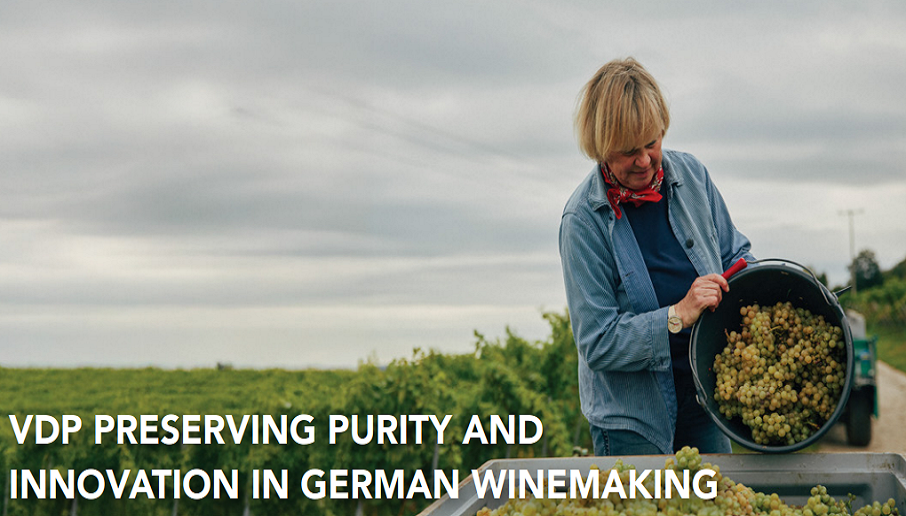
Malay Kumar Rout
in routmalay
The founder of WSCI
(Wine & Spirits Club of India)
For over a century, the Verband Deutscher
Prädikatsweingüter (VDP) has shaped German
wine, preserving quality, tradition, and innovation
through changing times. Established in 1910, this
association of winemakers has played a vital role
in redefining how German wines are perceived
globally. Faced with mass production and
inconsistent standards that once threatened the
nation’s reputation, the VDP set strict protocols
that restored German wine to an art form by
protecting its legacy while raising new
benchmarks for purity, terroir expression, and
excellence.
For those in the trade, the VDP eagle clutching a
bunch of grapes is more than just a logo; it’s a
mark of integrity, provenance, and craftsmanship.
Like Italy’s Consorzios, France’s appellation
system, or the Darjeeling Tea certification, the
VDP symbol offers a trusted authenticity
guarantee. But in Germany, it carries even greater
weight, blending tradition with meticulous
scientific precision and regulatory discipline –
elements that have helped define the country’s
wine identity for 100 years.
Regional Strength and Identity
As a collective of regional associations, the VDP unites eleven distinct winegrowing areas, from the slate-laden vineyards of Mosel to the loess-rich soils of Rheinhessen and Baden. It operates as a federal system, allowing each region to manage its classification, tastings, and marketing while remaining under the oversight of the VDP’s national office in Mainz. This dual structure of national coordination with local autonomy ensures that regional character and the broader German wine reputation remain intact.
As a collective of regional associations, the VDP unites eleven distinct winegrowing areas, from the slate-laden vineyards of Mosel to the loess-rich soils of Rheinhessen and Baden. It operates as a federal system, allowing each region to manage its classification, tastings, and marketing while remaining under the oversight of the VDP’s national office in Mainz. This dual structure of national coordination with local autonomy ensures that regional character and the broader German wine reputation remain intact.
Membership in the VDP is by invitation only,
awarded to estates that consistently demonstrate
exceptional vineyard stewardship, commitment
to terroir, and mastery of enology. Becoming a
member is often the result of decades of
dedication, marked by strict yield management,
sustainable farming, and consistently high
standards, enabling them to earn a place among
the most respected achievements in German
viticulture.
Five Principles That Define the VDP
The VDP operates under five core philosophies that have shaped its global reputation:
Terroir-Based Classification – Borrowing from Burgundy’s system, the VDP developed a vineyard hierarchy that prioritizes origin over grape variety.
The VDP operates under five core philosophies that have shaped its global reputation:
Terroir-Based Classification – Borrowing from Burgundy’s system, the VDP developed a vineyard hierarchy that prioritizes origin over grape variety.
This structure includes Gutswein
(estate wine), Ortswein (village wine), Erste Lage (premier cru), and Grosse Lage (grand
cru), shifting focus from traditional sugar-based
categories to site-specific authenticity.
Sustainable Viticulture – Long before terms like
“organic” and “biodynamic” became global
buzzwords, VDP members were actively
preserving soil health and biodiversity,
recognizing sustainability as an integral part of
quality winemaking.
Yield Limits – To preserve concentration and
balance, the VDP enforces strict production caps,
often limiting yields to 50 hl/ha for Grosse Lage
wines, ensuring phenolic ripeness, aromatic
complexity, and depth in each bottle.
Selective Hand Harvesting – Mechanized
harvesting is forbidden under VDP standards.
Grapes must be hand-picked in multiple rounds,
ensuring only the ripest and healthiest fruit makes
it into the cellar.
Sensory and Quality Audits – Every vintage
undergoes blind tastings led by regional VDP
panels before wines can carry the association’s
emblem, reinforcing trust between producer and
consumer.
These principles, upheld for over a century, have
established the VDP as Germany’s most
influential voice in winemaking, influencing
national policies and global recognition.
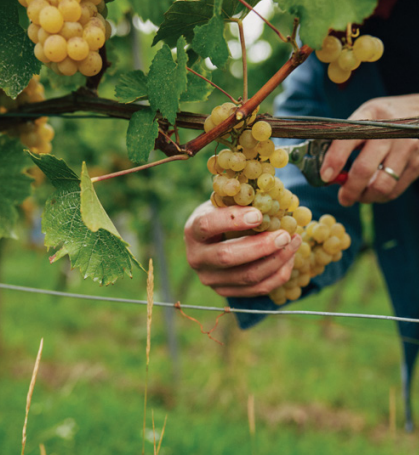
A Changing Legacy
The VDP’s influence extends well beyond its 200+ member estates, shaping Germany’s wine industry. One of its most profound impacts has been shifting the focus away from the 1971 Wine Law’s sugar-content classification to a terroir-driven philosophy, paving the way for the growing popularity of dry wines (Trocken), especially in regions historically known for sweeter Riesling. Since Germany lacks a government-mandated classification system like Burgundy’s, the VDP established its vineyard hierarchy with Grosse Lage and Erste Lage designations. This framework provided producers with greater transparency and allowed them to present their best sites confidently on the global stage. Today, wines carrying the VDP eagle command premium prices worldwide, reflecting the association’s tireless efforts to elevate German wine from an agricultural product to a collector’s item.
The VDP’s influence extends well beyond its 200+ member estates, shaping Germany’s wine industry. One of its most profound impacts has been shifting the focus away from the 1971 Wine Law’s sugar-content classification to a terroir-driven philosophy, paving the way for the growing popularity of dry wines (Trocken), especially in regions historically known for sweeter Riesling. Since Germany lacks a government-mandated classification system like Burgundy’s, the VDP established its vineyard hierarchy with Grosse Lage and Erste Lage designations. This framework provided producers with greater transparency and allowed them to present their best sites confidently on the global stage. Today, wines carrying the VDP eagle command premium prices worldwide, reflecting the association’s tireless efforts to elevate German wine from an agricultural product to a collector’s item.
How Partnership Benefits New Wineries
For new wineries entering a competitive market, authenticity is essential. Joining respected organizations like the VDP offers several benefits:
For new wineries entering a competitive market, authenticity is essential. Joining respected organizations like the VDP offers several benefits:
Quality Assurance – Meeting high standards
helps wineries build a strong reputation based on
skill rather than marketing hype.
Market Visibility – The VDP emblem is widely
recognized among sommeliers and consumers,
making it easier for wineries to gain trust, improve
brand presence, and expand to international
markets.
Collaborative Growth – Membership opens
doors to valuable research, industry connections,
trade events like VDP Weinbörse, and marketing
support, giving wineries opportunities beyond
what they could achieve alone.
For ambitious vintners, joining the VDP is both a
strategic decision and a philosophical
commitment – an investment in excellence,
heritage, and innovation within Germany’s storied
wine tradition.
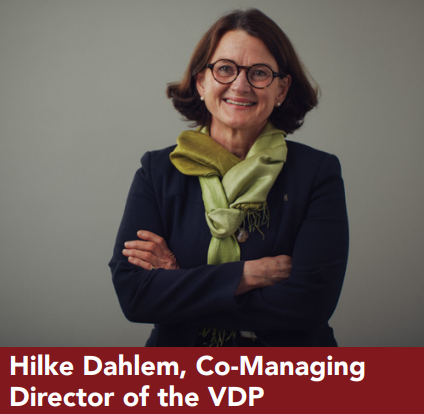
In a conversation, Hilke Dahlem, Co-Managing
Director of the VDP, shared insights on the
association’s evolving mission, its continued
relevance, and how it prepares for the economic
challenges ahead.
Do the VDP’s strict vineyard regulations
create barriers for small producers exploring
experimental winemaking?
No, because the VDP does not shy away from innovation. We have clear rules on classification and quality standards, but these evolve rather than remain rigid. Wines must reflect their terroir and are produced as traditionally as possible. Wineries invited to join the VDP have already demonstrated their commitment through their vineyard practices and winemaking approach. Trends and new developments are carefully monitored and assessed over time. If they prove sustainable and valuable, we integrate them into our statutes. Our vineyard classification system serves as a model across Germany, with many wineries outside the VDP voluntarily adopting our standards. Our members also produce innovative wines, though some fall outside the formal VDP classification.
No, because the VDP does not shy away from innovation. We have clear rules on classification and quality standards, but these evolve rather than remain rigid. Wines must reflect their terroir and are produced as traditionally as possible. Wineries invited to join the VDP have already demonstrated their commitment through their vineyard practices and winemaking approach. Trends and new developments are carefully monitored and assessed over time. If they prove sustainable and valuable, we integrate them into our statutes. Our vineyard classification system serves as a model across Germany, with many wineries outside the VDP voluntarily adopting our standards. Our members also produce innovative wines, though some fall outside the formal VDP classification.
How does the VDP’s regional and national
structure maintain quality while allowing for
local variations?
The federal structure of the VDP offers several advantages. The national association provides a unified presence, strengthening our voice, increasing international visibility, and enabling cross-regional events.
The federal structure of the VDP offers several advantages. The national association provides a unified presence, strengthening our voice, increasing international visibility, and enabling cross-regional events.
At the same time, our understanding of the best German wine is not
about uniformity but ensuring distinct regional
expression. A Pinot Noir from the Ahr tastes very
different from one in Baden due to terroir
differences, yet both are equally valued within our
classification system. Our regional associations
engage with local challenges and strengths and
incorporate their findings into the larger VDP
framework. Imposing centralized rules would
diminish this diversity. For example, each region
includes its traditionally grown grape varieties in
classification, allowing a dynamic exchange and
shared learning within the association.
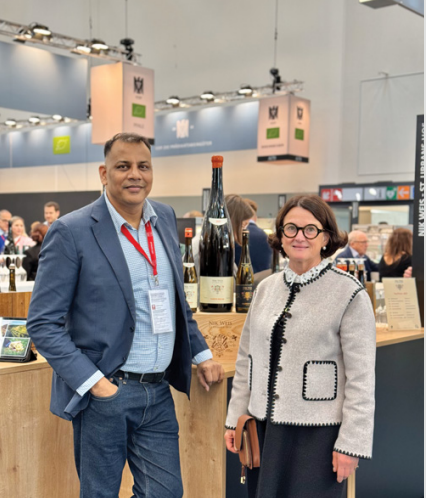
How does the VDP balance the authenticity of
terroir and producer identity while managing
inevitable shifts in membership?
Many wineries are passed down within families or entrusted to those with deep knowledge of the vineyards. However, transitions do not always proceed smoothly, which is why the VDP is not a closed institution. Members who no longer meet our standards may leave or be excluded, but such decisions follow a long and carefully monitored process overseen by regional associations. When ownership changes, a winery undergoes a multi-year evaluation to confirm it can uphold VDP standards. New members are also observed over an extended period before acceptance. Despite this evolution, some of our founding members from 1910 remain in the association today.
Many wineries are passed down within families or entrusted to those with deep knowledge of the vineyards. However, transitions do not always proceed smoothly, which is why the VDP is not a closed institution. Members who no longer meet our standards may leave or be excluded, but such decisions follow a long and carefully monitored process overseen by regional associations. When ownership changes, a winery undergoes a multi-year evaluation to confirm it can uphold VDP standards. New members are also observed over an extended period before acceptance. Despite this evolution, some of our founding members from 1910 remain in the association today.
Is the VDP adjusting its classification system to
reflect modern consumer trends?
This response relates closely to the first question. To provide concrete examples: PIWI (fungus-resistant grape varieties), natural wines (often unfiltered and without sulfur), and alcohol-free wines are areas we are actively monitoring and experimenting with. PIWI, in particular, offers potential solutions for climate change adaptation, and many winegrowers are exploring its viability. However, these grape varieties have only been cultivated in Germany for a short time, meaning we lack sufficient long-term data on their compatibility with specific regions and their impact on terroir expression. As a result, they are currently classified at the lower VDP.GUTSWEIN level while we continue assessing their broader suitability.
This response relates closely to the first question. To provide concrete examples: PIWI (fungus-resistant grape varieties), natural wines (often unfiltered and without sulfur), and alcohol-free wines are areas we are actively monitoring and experimenting with. PIWI, in particular, offers potential solutions for climate change adaptation, and many winegrowers are exploring its viability. However, these grape varieties have only been cultivated in Germany for a short time, meaning we lack sufficient long-term data on their compatibility with specific regions and their impact on terroir expression. As a result, they are currently classified at the lower VDP.GUTSWEIN level while we continue assessing their broader suitability.
With membership re-evaluated every five
years and considerable turnover since 1990,
how does the VDP ensure that quality and
tradition remain at the core rather than
favoring financial viability?
The primary focus of the audit is assessing whether a winery’s objectives align with VDP values and whether our classification principles are being properly implemented. The evaluation process includes sensory testing of wines, vineyard inspections, and a review of overall estate development. While financial viability is a consideration within our five-year-old broader sustainability strategy, it does not dictate membership decisions.
The primary focus of the audit is assessing whether a winery’s objectives align with VDP values and whether our classification principles are being properly implemented. The evaluation process includes sensory testing of wines, vineyard inspections, and a review of overall estate development. While financial viability is a consideration within our five-year-old broader sustainability strategy, it does not dictate membership decisions.
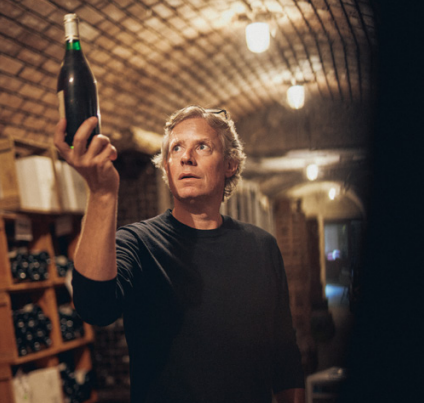
How is the VDP responding to climate change
and its effects on traditional German grape
varieties?
In earlier years, Germany’s cool climate benefited from gradual warming, allowing us to produce highly refined wines. However, today’s winemakers are contending with extreme weather events, such as the Ahr Valley flood disaster, droughts, and late frosts. Many VDP members are adopting sustainable or organic viticulture methods and preparing their vineyards to retain moisture and withstand harsher conditions. Cross-terracing is one approach that provides additional shade. The advantage of VDP wineries lies in their extensive experience coupled with adaptability. No two vintages are the same, but our members have learned to respond dynamically to challenges, often serving as industry leaders in climate resilience.
In earlier years, Germany’s cool climate benefited from gradual warming, allowing us to produce highly refined wines. However, today’s winemakers are contending with extreme weather events, such as the Ahr Valley flood disaster, droughts, and late frosts. Many VDP members are adopting sustainable or organic viticulture methods and preparing their vineyards to retain moisture and withstand harsher conditions. Cross-terracing is one approach that provides additional shade. The advantage of VDP wineries lies in their extensive experience coupled with adaptability. No two vintages are the same, but our members have learned to respond dynamically to challenges, often serving as industry leaders in climate resilience.
What are the biggest challenges and
opportunities ahead for the VDP in a changing
global wine market?
Our advantage lies in the fact that people globally recognize the VDP eagle on the capsule as a symbol of origin-related wines of the highest quality from Germany. This promise and reliability make us a trustworthy anchor in an increasingly competitive market environment. We stand for sustainable enjoyment at the highest level and for wines that are complex, storable, and full of character.
Our advantage lies in the fact that people globally recognize the VDP eagle on the capsule as a symbol of origin-related wines of the highest quality from Germany. This promise and reliability make us a trustworthy anchor in an increasingly competitive market environment. We stand for sustainable enjoyment at the highest level and for wines that are complex, storable, and full of character.
In addition, our association, founded in 1910, has
survived many ups and downs. Today, of course,
we are feeling the effects of a tense market
situation characterized by declining consumer
purchasing power, wage disputes, and a more
critical discourse on alcohol consumption in
general. We are aware of all these challenges and
take them very seriously. Nevertheless, we are
firmly convinced that wine – an integral part of
our culture for over 8,000 years – can survive such
difficult times. Thanks to the values and working
methods of our member wineries, we are
confident that wine will be able to meet these
challenges and remain relevant in the future.

